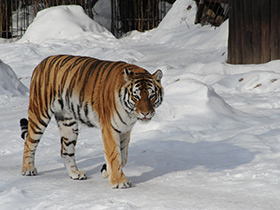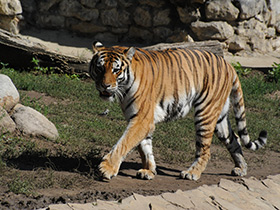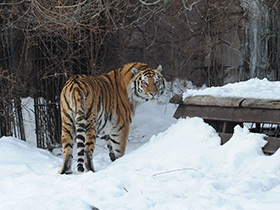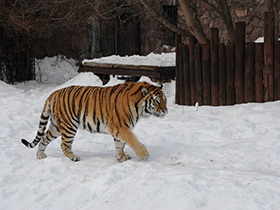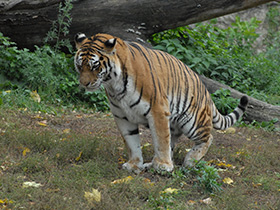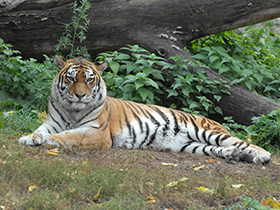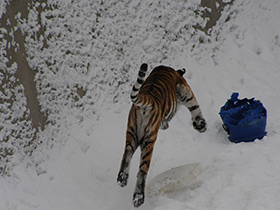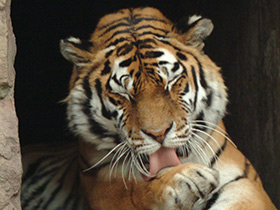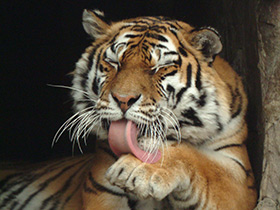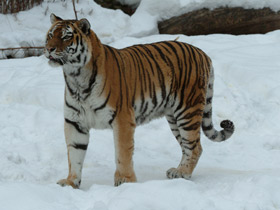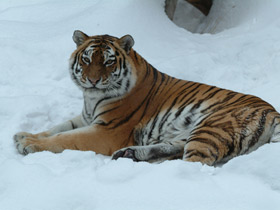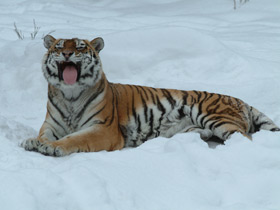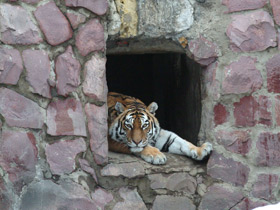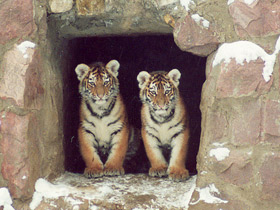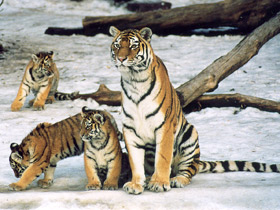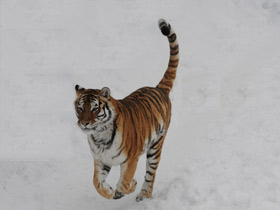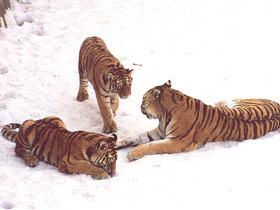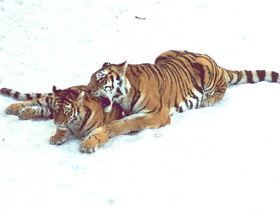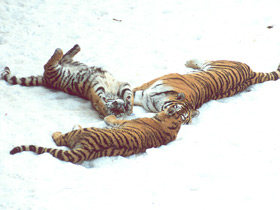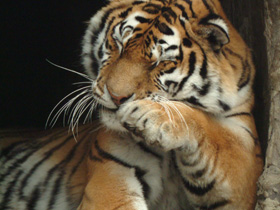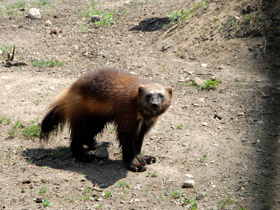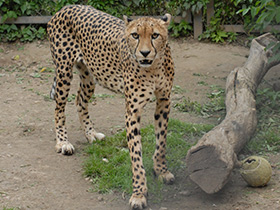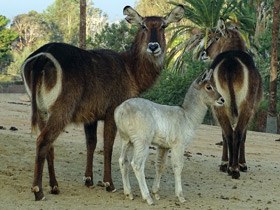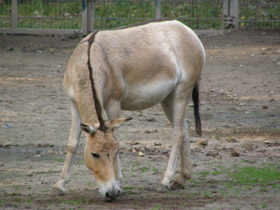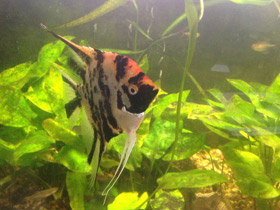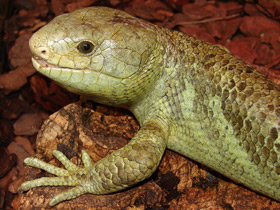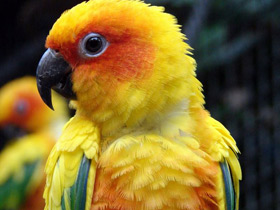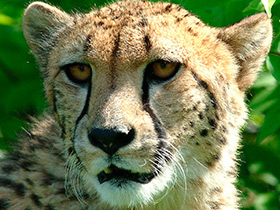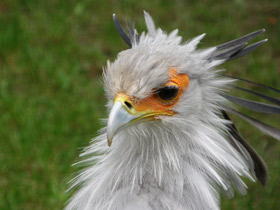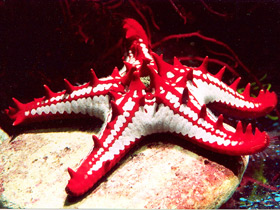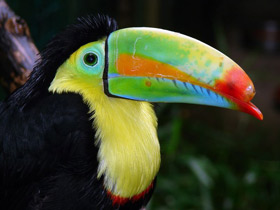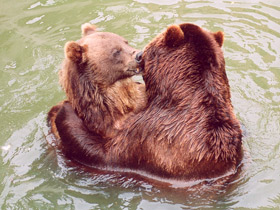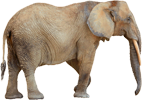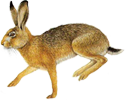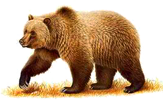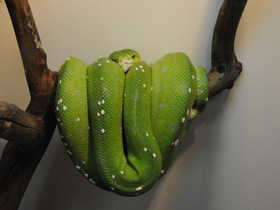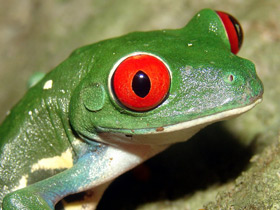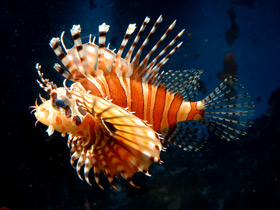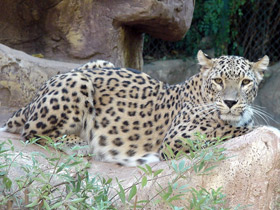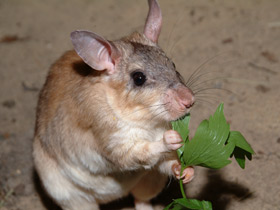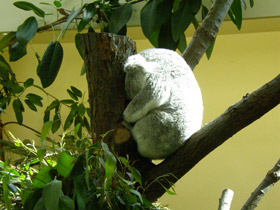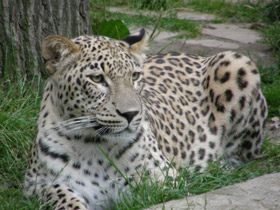The Siberian tiger (Panthera tigris altaica)
 The Siberian tiger (Panthera tigris altaica) is included in the Russian Red List
The Siberian tiger (Panthera tigris altaica) is included in the Russian Red List
The Siberian tiger (Panthera tigris altaica), also known as the Amur tiger, Caspian tiger or Persian tiger (Panthera tigris virgata), is a subspecies of tiger that currently occupies only the evergreen and mixed forests of the south-eastern corner of Russia, in the Amur River region and the Russian-Chinese border.
Appearance
Panthera tigris altaica is the largest and northernmost of all tiger subspecies (photo 1, 2). Winters in the northern taiga are very harsh, so the fur of Amur tigers is much thicker and longer than that of their southern siblings, and their colour is lighter, matching the colour of the snow (photo 3, 4).
Only the Amur tiger has a five-centimetre layer of fat on its belly to protect it from the cold and icy wind. Its ears are much shorter than those of other subspecies to avoid frostbite. This powerful and beautiful predator has an elongated and flexible body, a large rounded head, strong legs and a long tail (photo 5).
The largest member of the cat family, Panthera tigris altaica, is even larger than the king of beasts, the lion: males can reach 380 cm in length and 110 cm at the withers, weighing between 160 and 270 kg (females are clearly smaller).
Nutrition and behaviour.
Tigers lead a solitary life, each tiger having a large hunting ground covering an area of up to 500 km² or more. If there is enough food in this area, the host can stay there for a long time. It marks its territory with urine and scratches on the bark of trees, and constantly monitors its own and others' markings. The tiger is an excellent hunter; its enormous physical strength and size allow it to hunt large game, but it sometimes does not disdain fish, frogs, birds and mice; sometimes it also eats the fruits of some plants. However, the Amur tiger's diet consists mainly of ungulates: Manchurian deer, spotted and red deer, roe deer, wild pigs and elk. Despite its natural predatory qualities, the tiger is far from always successful in a tiger fight: for every 6 or 7 attacks, it has only one successful one.
Reproduction
As Panthera tigris altaica has a very large territory, the female usually goes in search of a mate. The gestation period is 95-112 days, after which 3 to 4 blind tiger cubs are born.
Their eyes open at 9 days and their teeth begin to grow at two weeks of age. The two-month-old cubs already occasionally come out of their shelter and play in the open air. Their mother brings them meat, although she continues to feed them milk for another 5 to 6 months. At six months of age, the cubs begin to accompany their mother on hunts, but it takes them a long time to learn all the tricks of the hunt. Tiger cubs play a lot, which also helps them learn the skills necessary for hunting. At one year of age, they hunt for the first time and by the age of two they can catch larger prey. However, for the first few years of their lives, young tigers remain close to their mother and hunt alongside her.
Conservation status
A regular census of Panthera tigris altaica shows that there are very few left, no more than 400 individuals. This rare animal is included in the IUCN Red List. The main reason for the tiger's decline is the destruction of its habitat and the animals it hunts. Poaching is a serious problem.









